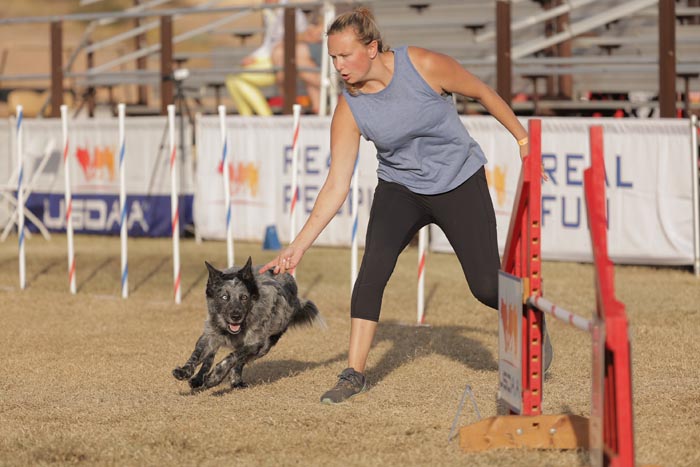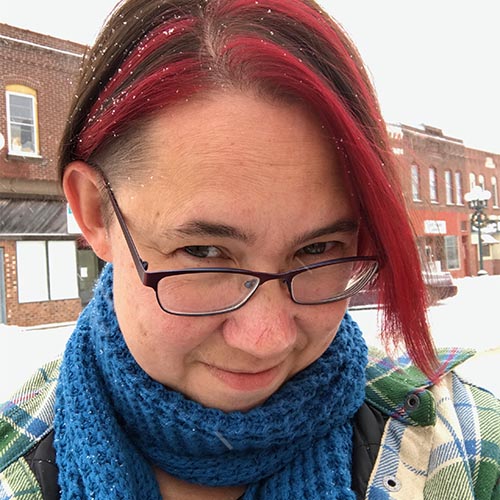As a photographer, the most frequently asked question I get is:
What settings are you using?
I’ll be at the ring at an agility trial and someone will see my camera (or, to be more accurate, they’ll see my ginormous lens) and inevitably they will ask what settings I’m using. I sometimes rattle them off and sometimes I waffle a bit and give them a vague answer. It just depends on how generous I’m feeling that day. <grin>
The problem with this question is that the answer is really meaningless. Yes, you can set your camera to the same exact settings I use and get a photo that is exposed the same way mine is. But unless you are bringing a lot of other skills to the table, you still aren’t going to get a good photo of a screaming fast dog on the agility course.
My other issue is that a list of my settings tells you nothing about *why* I selected them. The looks I get when I say that I’m using an ISO of 40,000 ranges from confusion to amusement (as if I’m pulling their leg), to outright disbelief. If you understand how and why I chose my settings, then ISO 40,000 is completely reasonable. But no one wants a lecture when all they’re expecting is a “recipe” for how they should set their camera.
In this class, there will be no recipes. I will share my settings of course, but more importantly, I will share my strategy for picking those settings. My hope is that you will leave this class with a solid understanding of the process for picking your settings for *any* situation you want to photograph. (And you’ll learn when you should just put away the camera and be present in the moment.)
Reality Check
If you’ve taken any classes with me, you know that I try to interject a strong dose of reality to balance out the fantasyland version of what it’s like to be a photographer.
You will be learning how to think through a process for selecting your manual exposure settings. This does not mean you will always get it right on the first try and it does not mean that you won’t royally screw some things up, even after multiple tries. I have been doing this for 17 years and I *still* mess up my exposure. STUFF HAPPENS. And yes, I will show you my screw-ups in this class to make you feel better. ;-)
Let go of any misconceptions about how quickly you should be able to set your exposure. This is a thoughtful process and one that shouldn’t be rushed. Most of your assignments will involve more thinking than shooting. However, if you practice diligently, you will notice that your comfort and fluency with the skill of setting exposure will increase, even in six weeks.
The Secret to Picking Your Settings
What is this secret? It's a strategy called the Limiting Factor Method (LFM). This strategy was introduced in Shoot the Dog, so we’ll start with some review.
Galen Rowell, an accomplished landscape photographer, describes it this way:
“To shoot many different subjects in natural light, each with different technical requirements, I devised something I call the ‘limiting-factor’ method. Professional sports photographers gravitate naturally toward this way of shooting, but most scenic photographers focus on static subjects so often that they are rarely forced to organize their approach to technical problems — that is, how and in what order they adjust the camera’s settings.
“The limiting-factor method instantly streamlines and reorders my mental checklist for each photo situation. I simply think of every photo as having one problem to be solved, a limiting factor, and I begin with that. If there’s more than one, I pick the most crucial. If I can’t think of one, I know I’m in one of those rare right-place/right-time situations where I can’t miss.”
Until I read this, I didn’t even realize that this was a “thing.” However, this is EXACTLY how I approach photography. I decide on the most important problem I have to solve in the image I’m trying to create and base my settings on it. This will nail down one of the three elements of exposure. Then I decide which of the two remaining elements is more important and dial it in. By setting the two most important elements, that leaves you no choice for the third element.
In order to effectively use the LFM, it is really helpful to know what things can be fixed or altered in post-processing and which things can’t. I know we don’t do any post-processing in this class, but I’ll give you enough information here so that you’ll know how to make that determination.
The single most important thing to remember is that you cannot fix a blurry photo after it is taken. This is worth repeating, so repeat after me.
You cannot fix a blurry photo.
You must get the focus right or it’s an image destined for the trash. No ifs, ands, or buts about it. Blurry image = throw it away.
What setting do we use to keep a photo from being blurry? Or to add blur intentionally? Shutter speed. In general, if you have a subject that is moving, the setting that you will prioritize is going to be shutter speed.
Another thing that you cannot change in after the fact is Depth of Field. Yes, there are tools in Photoshop and Lightroom to add background blur, but there is no substitute for the blur created in the camera with a shallow DOF.
What setting do we use to control the DOF? Aperture. In general, if you have a subject that is stationary, the first setting you select will be aperture.
There is one characteristic of your images that can be altered afterwards and that would be noise. High levels of noise can be fixed. The noise-reduction tools in both Lightroom and Photoshop are very good. There is no reason to make ISO your priority setting. EVER. ISO is used to balance the other two settings — that’s it! In my classes, you will never select your ISO first.
The way we solve our “problem” is through a series of questions about the specific situation we are trying to photograph.
- What is the most important problem to be solved? Be sure to define this in terms of things that are controlled with camera settings, not problems in a broader sense.
- What setting (aperture or shutter speed) do we use to solve that problem?
- What is the value of that setting I will use to solve the problem?
- What is the value of the other non-ISO element (shutter speed or aperture)?
- What ISO will I have to use to get these other two settings?


 Instructor: Amy Johnson
Instructor: Amy Johnson
